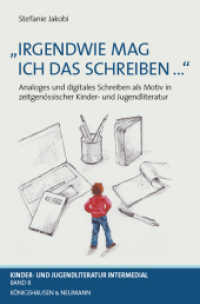Full Description
This book adopts a novel approach to resolving the present difficulties experienced by the courts in imposing strict liability for the tort of another. It looks beyond the traditional classifications of 'vicarious liability' and 'liability for breach of a non-delegable duty of care' and, for the first time, seeks to explain all instances of strict liability for the tort of another in terms of the various relationships in which the courts impose such liability. The book shows that, despite appearances, there is a unifying feature to the various relationships in which the courts currently impose strict liability for the tort of another. That feature is authority. Whenever the courts impose strict liability for the tort of another, the defendant is either vested with authority over the person who committed a tort against the claimant or has vested or conferred a form of authority upon that person in respect of the claimant. This book uses this feature of authority to construct a new expositive framework within which strict liability for the tort of another can be understood.
Contents
1. Introduction
I. What is 'Strict Liability for the Tort of Another'?
II. Existing Terminology
III. Existing Explanation(s)
IV. A New Expositive Framework
V. Limits of the Book
VI. Methodology
VII. Conclusion
PART I
CURRENT APPROACH
2. Relationships which Give Rise to Strict Liability for the Tort of Another
I. Employment Relationship
II. Relationship between Adjoining Land Owners in Relation to Work Threatening Support or Common Walls
III. Relationship between Hospital and Patient
IV. School Relationship
V. Relationship between Occupier and Invitee (Arguably)
VI. Agency Relationship
VII. Conclusion
PART II
RECONCEPTUALISING THE LAW
3. The Common Feature of Authority
I. The Relationships
II. The Distinguishing Feature of the Cases
III. Why is Authority Significant?
IV. A New Expositive Framework for Strict Liability for the Tort of Another
4. Conferred Authority Strict Liability
I. Basis of the Strict Liability
II. Nature of the Strict Liability
III. In What Circumstances Does the Strict Liability Arise?
IV. Scope of the Strict Liability
V. To Whom is the Strict Liability Owed?
VI. Other Relationships
VII. Conclusion
5. Employee Strict Liability
I. Basis of the Strict Liability
II. Nature of the Strict Liability
III. In What Circumstances Does the Strict Liability Arise?
IV. Scope of the Strict Liability
V. Who is an Employee?
VI. The 'Both Ways' Test
VII. Master's Tort or Servant's Tort
VIII. Conclusion
6. Agent Strict Liability
I. Who is an Agent?
II. Basis of the Strict Liability
III. Nature of the Strict Liability
IV. In What Circumstances Does the Strict Liability Arise?
V. Scope of the Strict Liability
VI. Composite Torts
VII. Solicitor's Employee
VIII. Contract or Tort?
IX. Conclusion
PART III
CRITIQUE
7. The Boundaries between the Different Forms of Strict Liability for the Tort of Another
I. Why Should the New Expositive Framework be Adopted?
II. Making the Boundaries Clear
III. Conclusion
8. Miscellaneous Categories of Strict Liability for the Tort of Another
I. Partner Strict Liability
II. Strict Liability for a Tort Committed by a Person upon whom Authority has been Conferred to Deal with a Bailor's Goods
III. Strict Liability for a Tort Committed by a Person Driving a Car for the Owner's Purposes?
IV. Conclusion
9. Conclusion
I. The Importance of the Book
II. Authority
III. Normative Underpinnings
IV. Personal Liability v Strict Liability
V. Where to from here?







